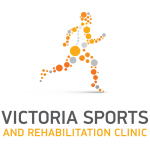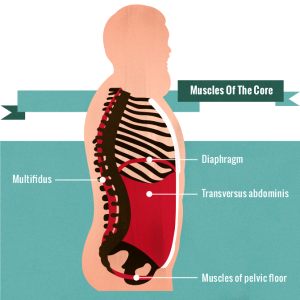There always seems to be someone telling you to strengthen your core, whether that be your treating practitioner, government guidelines or the media, but what does this mean, and how is it going to help your back pain?
What Is Your Core?
Your true core is made up of a cylinder of support that comprises of four main components. These are:
- Transverse Abdominis muscle – the corset wrapping from the back of the spine to the front of the abdominal wall
- Pelvic Floor – the lower support of the abdominal cavity
- Multifidus – small, local muscles that connect each vertebrae to each other
- Diaphragm – primary muscle of respiration that connects to the lower rib cage and contracted through breathing patterns during the exercises
Core stability is created from the use of these muscles as a group and keeps the pelvis and spine in the desired stable position while moving the limbs or the whole body through space, without compensations.
If you cannot maintain desired control of this area in a given movement and the lower back arches or the pelvis moves excessively, this demonstrates poor core control and lack of core stability.
Lack of core stability generally leads to an overuse of the global muscles in the lower back, instead of using the local, stabilising muscles. The global muscles have a different muscle composition and are not designed to stay active for long periods of time or for spinal stability, as their normal role is to switch on and off for larger movements. As a result of this, it leads to increased activation times, tightening of these global muscles, poor muscle compensatory patterns and pain.
Physical activity guidelines in Australia and the U.S suggest muscle strengthening activities at least twice a week (this could include light weights and using your own body weight). Harvard Health recommends a well-rounded plan that includes a combination of moderate-intensity aerobic activity & vigorous activity, plus two strength-training sessions a week for all major muscle groups including your core and balance exercises.
Whichever exercise routine you choose, start to think about not only your global muscles but also your core to provide support for your lower back.
References:
1. Isacowitz, R. & Clippinger, K. 2011, Pilates Anatomy, Human Kinetics, U.S.A
2. Heid, M 2017, Why Weight Training is Ridiculously Good For You, Time Health
3. Harvard Health Publications 2017, How should core work fit into your overall exercise plan, Harvard Medical School

